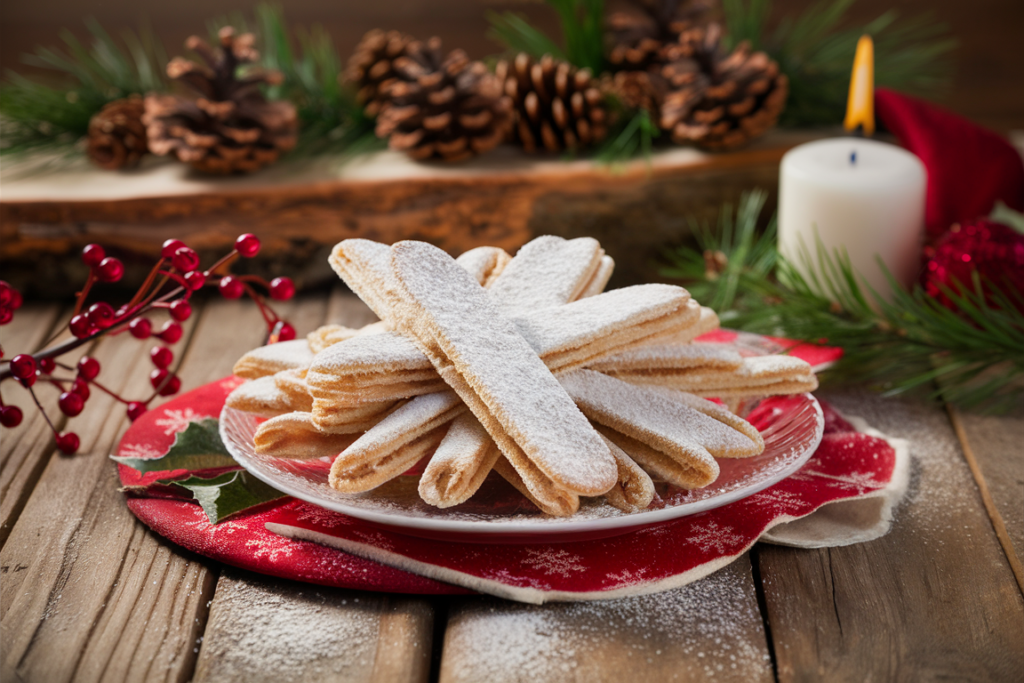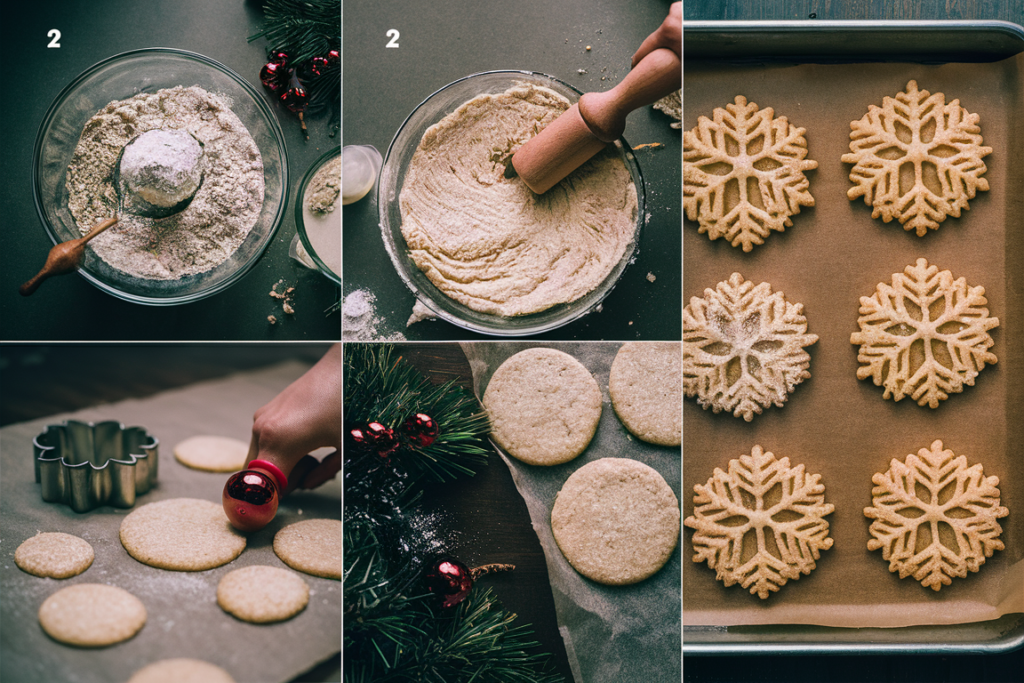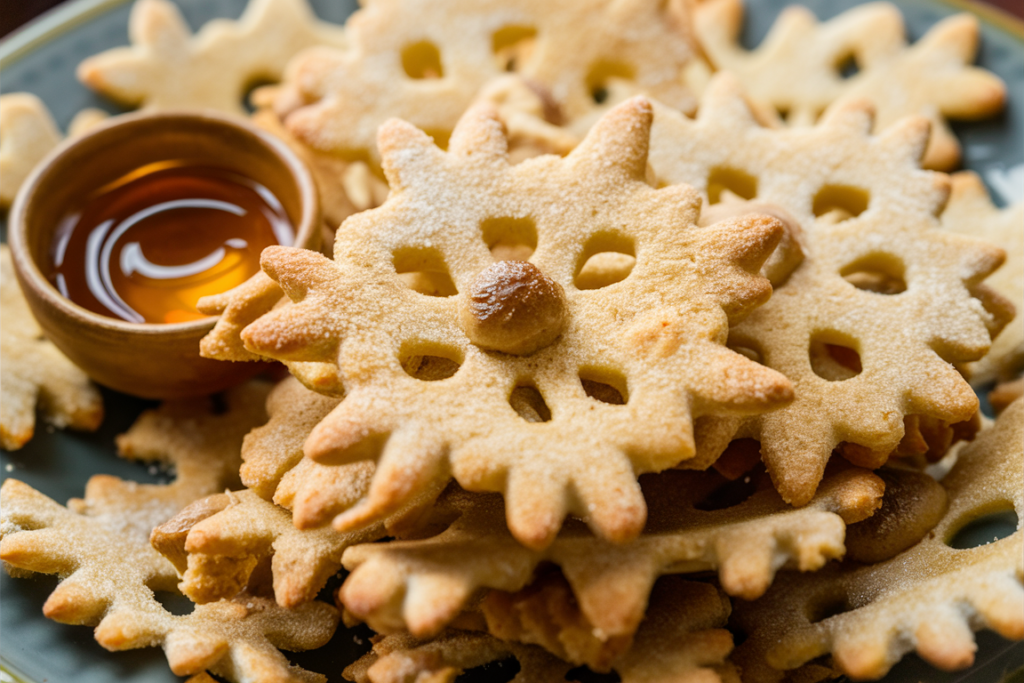Are Christmas Wafers Gluten-Free? Everything You Need to Know
Christmas wafers hold a cherished place in holiday traditions, symbolizing unity and celebration. But for individuals managing gluten sensitivity or celiac disease, it’s essential to know if these festive treats fit into a gluten-free lifestyle. This article delves into everything you need to know about Christmas wafers: from their traditional ingredients to gluten-free alternatives, cultural significance, and practical tips for making or buying them. Let’s unwrap the details!

Part 1: Introduction to Christmas Wafers
Understanding Christmas Wafers
Christmas wafers, often called opłatki in Polish traditions, symbolize peace, unity, and goodwill. Families and friends share these thin, unleavened wafers during holiday gatherings. Embossed with religious or festive images, they add a touch of reverence to Christmas meals.
Typically made from wheat flour and water, these wafers are baked into delicate sheets. Families break them during Christmas Eve dinner, often accompanied by wishes for health and happiness. While they’re steeped in tradition, their ingredients are the focus when considering dietary needs.
Traditional Ingredients in Christmas Wafers
At their core, traditional Christmas wafers are crafted using just a few simple ingredients: wheat flour, water, and sometimes a touch of salt. Their minimal composition makes them ideal for religious observances, where simplicity often takes precedence.
However, for individuals with gluten intolerance, wheat flour is a problematic component, as it contains gluten—a protein known to trigger adverse reactions in sensitive individuals. It’s crucial to recognize these ingredients when evaluating their compatibility with a gluten-free diet.
Part 2: Gluten and Dietary Considerations
What is Gluten?
Gluten is a protein found in grains such as wheat, barley, and rye. It’s responsible for giving dough its elasticity and structure, making it an essential component in many baked goods. While gluten is harmless to most people, it can pose significant issues for individuals with gluten intolerance, wheat allergies, or celiac disease.
In simpler terms, gluten acts like the glue holding baked goods together. However, for some, this “glue” can wreak havoc on their digestive systems, leading to uncomfortable and even dangerous reactions. This understanding sets the stage for identifying whether traditional Christmas wafers can fit into a gluten-free lifestyle.
Gluten Sensitivity and Celiac Disease
For individuals with gluten sensitivity, even trace amounts of gluten can cause symptoms like bloating, abdominal pain, and fatigue. But celiac disease takes this concern to another level. It’s an autoimmune disorder where the immune system attacks the lining of the small intestine in response to gluten consumption. Over time, this damage can lead to malabsorption of nutrients, resulting in serious health complications.
For those managing these conditions, it’s vital to be vigilant about ingredients—even in foods as seemingly simple as Christmas wafers. Since traditional wafers typically contain wheat flour, they are off-limits for people needing to avoid gluten. However, there’s hope in the form of gluten-free alternatives, which we’ll explore in the next section.
Transitioning to gluten-free versions isn’t just about avoiding discomfort; it’s about preserving the joy and symbolism of holiday traditions without compromising health. Interested in resources on celiac disease? Beyond Celiac offers invaluable information on living gluten-free.
Part 3: Gluten-Free Alternatives
Gluten-Free Christmas Wafer Recipes
Good news for those with gluten intolerance or celiac disease—you don’t have to miss out on this beloved tradition! Gluten-free Christmas wafers can be made at home with simple adjustments to the traditional recipe. By replacing wheat flour with alternatives like rice flour, potato starch, or a pre-mixed gluten-free baking blend, you can craft wafers that are just as delicate and meaningful.
A Simple Gluten-Free Wafer Recipe
- Ingredients:
- 1 cup gluten-free flour blend
- 1/4 teaspoon salt
- 1/2 cup water
- Instructions:
- Mix the flour, salt, and water until smooth.
- Preheat a wafer or pizzelle iron.
- Pour a small amount of batter onto the iron and press until crisp.
- Allow the wafers to cool and store them in an airtight container.
These wafers can be embossed with festive designs for added authenticity, preserving the spirit of the season.

Commercially Available Gluten-Free Christmas Wafers
If baking isn’t your forte, don’t fret—several brands now offer gluten-free Christmas wafers. These options ensure you can enjoy this tradition without compromising your health. Some reputable sources include specialty health stores, online retailers, and even religious supply shops.
When purchasing, always check for a certified gluten-free label. Certification confirms that the product has been tested to meet strict gluten-free standards, reducing the risk of cross-contamination.
Tip: If you’re curious about how gluten-free products are tested, visit Gluten-Free Watchdog for detailed insights into labeling and safety.
Cross-Contamination Risks
Even when a product is labeled gluten-free, there’s always a slight risk of cross-contamination. This occurs when gluten-free products are prepared or packaged in facilities that also process gluten-containing ingredients. To stay safe:
- Opt for products from dedicated gluten-free facilities.
- Read reviews or contact manufacturers to ensure their processes meet strict gluten-free standards.
Being informed and proactive helps keep holiday traditions enjoyable and worry-free.
Part 4: Cultural Perspectives
Christmas Wafers in Various Cultures
Christmas wafers, though deeply rooted in Polish traditions, hold significance across multiple cultures. In Poland, the wafer, or opłatek, is broken and shared among family members during Christmas Eve dinner. It’s not just a symbolic act—it’s a heartfelt moment of connection, with each person offering wishes for health, prosperity, and happiness as they share a piece.
In Lithuania, kalėdaitis serves a similar purpose, while in Slovakia, oblátky are accompanied by honey as part of their holiday customs. Even outside Europe, these wafers have found their way into Christmas celebrations in immigrant communities, where they serve as a comforting reminder of home and heritage. Their simplicity and symbolism transcend borders, fostering a universal spirit of unity.
The Significance of Sharing Christmas Wafers
At the heart of Christmas wafer traditions lies the act of sharing. The wafer represents more than just a festive treat—it’s a vessel for expressing love, forgiveness, and goodwill. Breaking and sharing wafers embodies the spirit of Christmas, encouraging togetherness and reflection on the year gone by.
For those embracing gluten-free Christmas wafers, the meaning remains unchanged. By ensuring that everyone, regardless of dietary needs, can partake in this ritual, families uphold the values of inclusion and harmony that the wafers symbolize.
Modern Twists on Traditional Rituals
In some families, the tradition has evolved to include personalized messages written on the wafers or even creative embossing with names and designs. These modern twists, while playful, keep the core tradition alive. Whether the wafers are gluten-free or traditional, their role as a unifying element of the holiday season remains steadfast.
Part 5: Practical Tips
Baking Gluten-Free Christmas Wafers at Home
Making your own gluten-free Christmas wafers at home ensures that everyone at your table can safely enjoy this cherished tradition. It’s easier than you might think, and with a few simple tips, you can create wafers that are just as delicate and meaningful as traditional ones.
Key Tips for Gluten-Free Wafer Baking:
- Use the Right Flour Blend: Gluten-free baking relies on a mix of flours to replicate the elasticity and structure of wheat. Rice flour and tapioca starch work well for wafers.
- Keep the Batter Thin: For that classic wafer thinness, ensure your batter is the consistency of pancake batter. Add water sparingly if needed.
- Invest in a Wafer Iron: A wafer or pizzelle iron will help you achieve the crisp texture and embossed designs synonymous with traditional wafers.
By experimenting with embossing plates, you can add a festive touch to your wafers. Whether it’s a nativity scene or a simple snowflake, these designs make the wafers even more special.
Where to Buy Gluten-Free Christmas Wafers
If time is tight or you prefer ready-made options, finding gluten-free Christmas wafers is simpler than ever. Here are some suggestions to guide your search:
- Specialty Stores: Many health food and specialty grocery stores carry gluten-free Christmas wafers, especially during the holiday season.
- Online Retailers: Websites like Amazon or Etsy often list small-scale bakers or suppliers offering gluten-free options.
- Church and Religious Supply Shops: Many churches and Catholic supply shops sell wafers, including gluten-free varieties, for holiday observances.
When ordering, check reviews to ensure quality and confirm the product’s gluten-free certification.
Ensuring Gluten-Free Certification
One of the most critical steps when buying gluten-free products is verifying their certification. Look for official labels from organizations like the Gluten-Free Certification Organization (GFCO), which guarantees that the product contains less than 20 parts per million (ppm) of gluten. This standard minimizes the risk of cross-contamination.
Signs of Reliable Gluten-Free Products:
- Clearly marked “gluten-free” on packaging.
- A certified gluten-free logo.
- Positive reviews from those with celiac disease or gluten intolerance.
Keeping an eye out for these indicators allows you to enjoy the holiday season with confidence and peace of mind.
Part 6: Frequently Asked Questions
FAQs About Gluten-Free Christmas Wafers
Are Christmas wafers naturally gluten-free?
No, traditional Christmas wafers are not gluten-free because wheat flour, which contains gluten, is used to make them. However, you can find gluten-free alternatives made with flours like rice, almond, or certified gluten-free blends.
Can I find gluten-free Christmas wafers in stores?
Yes, many specialty health food stores, religious supply shops, and online retailers offer gluten-free Christmas wafers. Always verify the gluten-free certification to ensure the product meets safety standards for those with celiac disease or gluten sensitivity.
Are gluten-free Christmas wafers safe for people with celiac disease?
When properly certified, gluten-free wafers are safe for people with celiac disease. Be cautious of cross-contamination and always check for trusted certification labels to ensure safety.
Do gluten-free Christmas wafers taste the same as traditional ones?
While gluten-free wafers may have a slightly different texture due to the absence of gluten, they can still be thin, crisp, and flavorful. Many gluten-free versions are indistinguishable from traditional ones when prepared or purchased from reputable sources.
How can I prevent cross-contamination when making gluten-free wafers?
To avoid cross-contamination:
- Use dedicated gluten-free utensils and cookware.
- Clean your workspace thoroughly before starting.
- Store gluten-free ingredients separately from those containing gluten.
Can I emboss gluten-free wafers with traditional designs?
Absolutely! Use a wafer iron or embossing plate to create the same festive designs on gluten-free wafers as you would on traditional ones. These decorative touches add authenticity and joy to your creations.
Part 7: Conclusion
Preserving Tradition with Gluten-Free Christmas Wafers
Christmas wafers symbolize unity, love, and the joy of sharing during the holiday season. For individuals with gluten intolerance or celiac disease, embracing gluten-free Christmas wafers ensures they can participate fully in this meaningful tradition without compromising their health.
From understanding the history and cultural significance of Christmas wafers to exploring gluten-free recipes and purchasing options, it’s clear that dietary restrictions don’t have to stand in the way of cherished holiday customs. Whether you choose to bake your own wafers at home or purchase them from a trusted source, taking steps to ensure their gluten-free status promotes inclusion and safety for everyone at the table.
By using alternative flours and mindful preparation methods, gluten-free wafers can mirror their traditional counterparts in taste, texture, and symbolic meaning. These options allow families to continue breaking bread together, fostering the same spirit of togetherness and goodwill that makes the holidays special.
Final Thought
The joy of Christmas is in the connections we make and the traditions we share. With gluten-free Christmas wafers, no one has to feel left out—every piece broken and shared is a step closer to a holiday that’s meaningful, inclusive, and truly merry.


